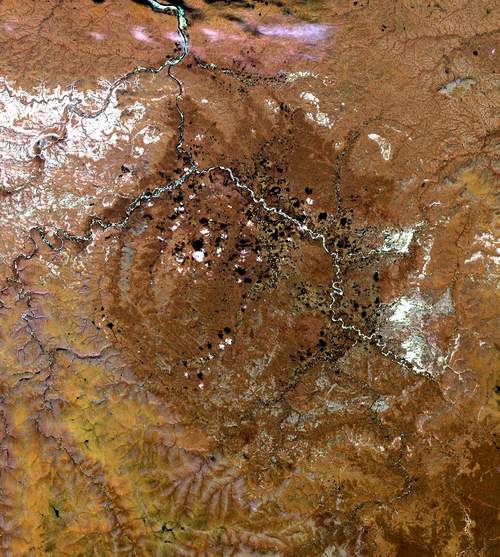Two craters dating from 35 million years ago probably were gouged by impacts from asteroids, not comets as previously thought. The finding raises the possibility of “showers” of asteroids similar to those already proposed for comets.
Roald Tagle (Natural History Museum, Berlin) and Philippe Claeys (Vrije Universiteit Brussel) reached this conclusion after studying two terrestrial craters. One, named Popigai, is in Siberia and the other, Chesapeake Bay, lies buried under continental-shelf sediments just off the Virginia coast. Popigai is about 60 miles (100 kilometers) in diameter, while Chesapeake Bay is 53 miles (85 km) across.
Writing in the July 30, 2004, issue of Science, Tagle and Claeys report finding in the case of Popigai that the rocks melted by the impact include contamination by meteoritic elements from ordinary (type-L) chondrite meteorites. These meteorites are believed to be asteroid fragments, originating in the main belt between Mars and Jupiter.
Planetary scientists are studying the question of asteroid showers after finding geological evidence for a rain of type-L asteroid debris that struck Earth about 480 million years ago. Scientists have long worked with the idea that passing stars or galactic tides could shake up the far-flung Oort Cloud of comets, sending showers of comets earthward. But the idea of similar showers of asteroids remained largely hypothetical until calculations showed Jupiter’s gravity can perturb fragments from collisions in the asteroid belt and send them rapidly inward.
Other craters on Earth have roughly similar dates as Popigai and Chesapeake Bay. These include Mistastin (38 million years old) and Wanapitei (35 million years), both in Canada, and Logoisk in Belarus (40 million years).
Asks Claeys, “Are these dates coincidence or smaller bits of asteroids falling on Earth during the same shower?”










